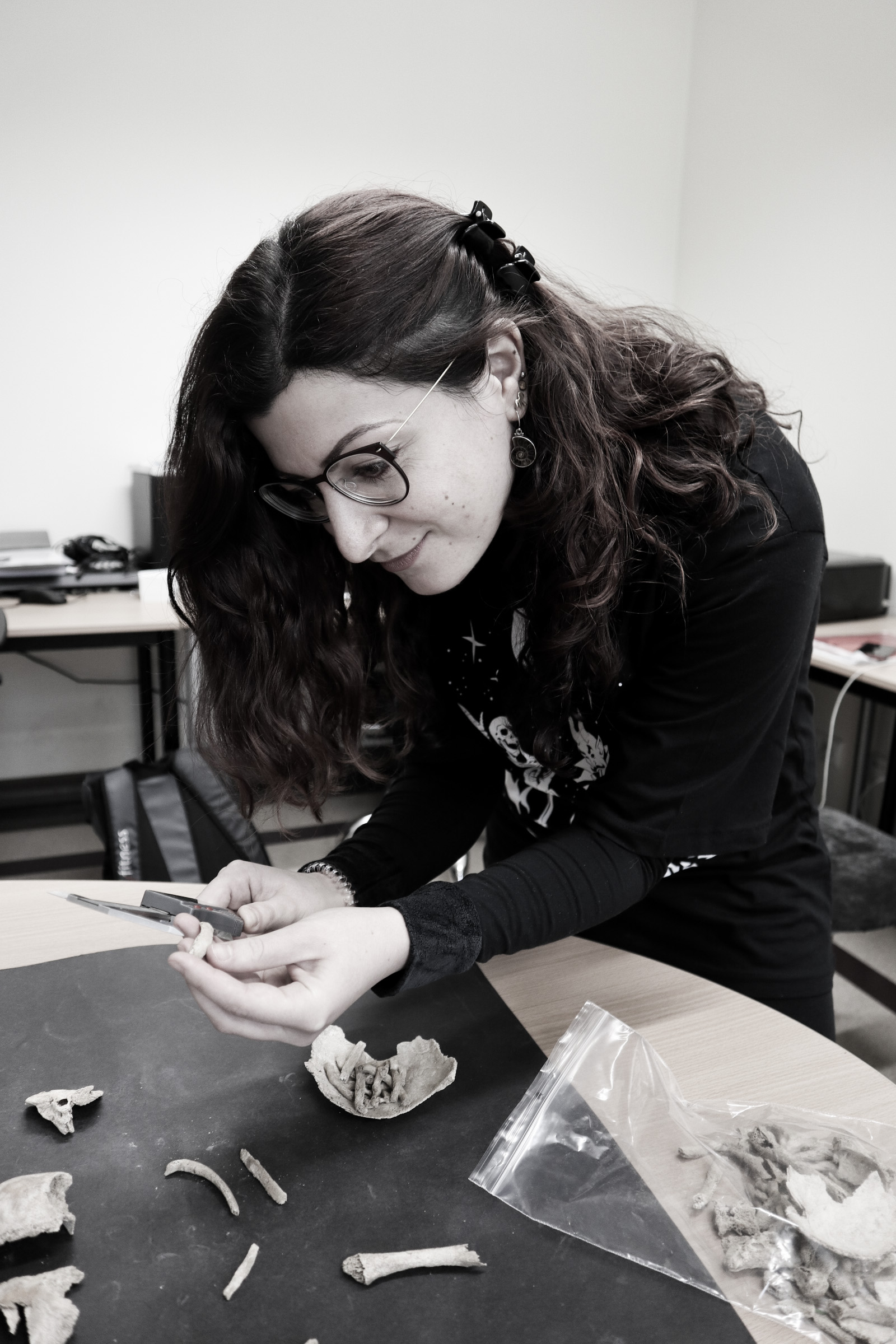Our team member’s doctoral defence: Alessandra Morrone

On 22 November at 10:15 our own Alessandra Morrone will defend her doctoral thesis “Children of the Grave: a multidisciplinary study of non-adult diet and disease from medieval and early modern southern Estonia”.
Alessandra’s PhD research is about the skeletal remains of non-adults provide numerous insights into the complexity of their personal and social lives, starting with birth and continuing through development and growth. In the last decade, several studies have provided insights into non-adult life, diet, and feeding practices. However, the bioarchaeology of children is currently underdeveloped in the Baltic states. The aim of the thesis is to obtain a large-scale overview of childhood health, social role, staple diet, and feeding practices through medieval and early modern Livonia (13th–17th c. AD). This was performed first with a theoretical approach, and then through the use of paleopathology, novel imaging techniques, and biomolecular analyses, constituting the first multidisciplinary study specifically dedicated to non-adults in Estonia and the Eastern Baltics. Crafted around five papers, this dissertation first reports the state of art of childhood bioarchaeology in the Baltics. It then continues exploring the philosophical implications of the paleopathological study of non-adults in the light of the Osteological Paradox. The third paper proposes Reflectance Transformation Imaging (RTI) as a precious tool for describing skeletal pathology. RTI was particularly useful for studying subtle bone changes in perinates, and was successfully employed also in the fourth paper. This presents the paleopathological study of a sample of perinates from St Jacob’s cemetery in Tartu. The study highlighted the presence of systemic metabolic disease in the sample. The health of pregnant women and their babies was discussed, as well as the treatment of the prematurely deceased in the light of cultural practices (ex. baptism). The last paper investigates the staple non-adult diet and feeding practices in Livonia through stable isotope analysis. The results suggest that children accessed food sources similarly to the adults and highlighted disparities in diet/feeding practices among children in rural and urban contexts. This is the first data regarding how long Livonian children were breastfed, and at which age the weaning process occurred. This dissertation constitutes a first step for the development of the bioarchaeology of children in the Eastern Baltics. The combination of methodological and theoretical approaches adopted opens new avenues for understanding social minorities in this area of Europe.
The defence can be followed in Zoom:
https://ut-ee.zoom.us/j/92045783145?pwd=RHBqNGtnT1kxVnNIU0tEc1VCNjZYQT09.
Meeting ID: 920 4578 3145, Passcode: 264376.
